Project description
Space and upper atmospheric sciences group in the National Institute of Polar Research (NIPR) has been constructing an observation network for auroral phenomena along the coast of the Dronning Maud Land in the Antarctica under an international collaboration, including Japanese Syowa Station (SYO), Belgian Princess Elisabeth Antarctica (PEA) station, Indian Maitri station (MAI), and South African SANAE station (SNA) in the auroral zone, and has developed a Unmanned Auroral Observation system (UAO). The first UAO (UAO-1) had been installed at Amundsen Bay area (AMB), which is located about 500 km eastward from Syowa Station, in February, 2017 in the summer operation of the 58th Japanese Antarctic Research Expedition (JARE-58). The second UAO (UAO-2) had been installed at PEA in January, 2020. In January, 2020, we had also installed an auroral imager system (AIS) at Indian Maitri Station.


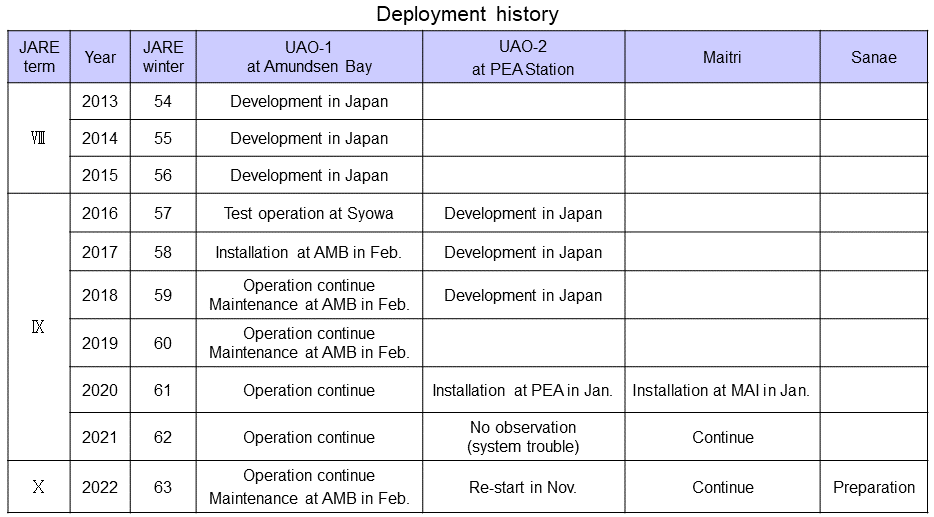
Location

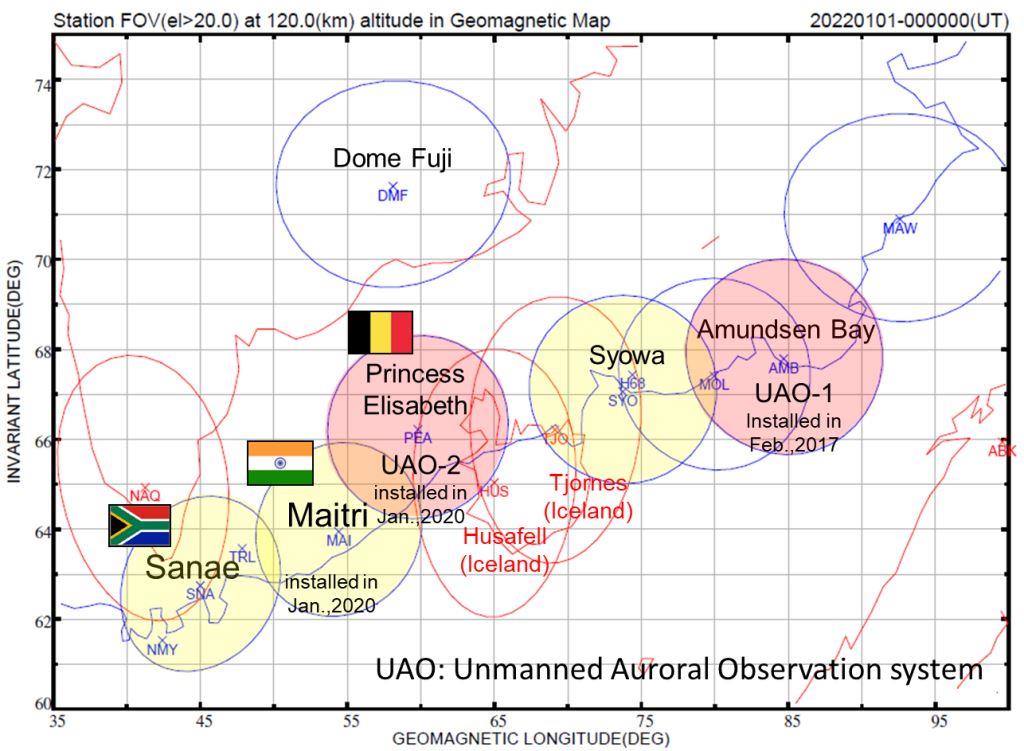
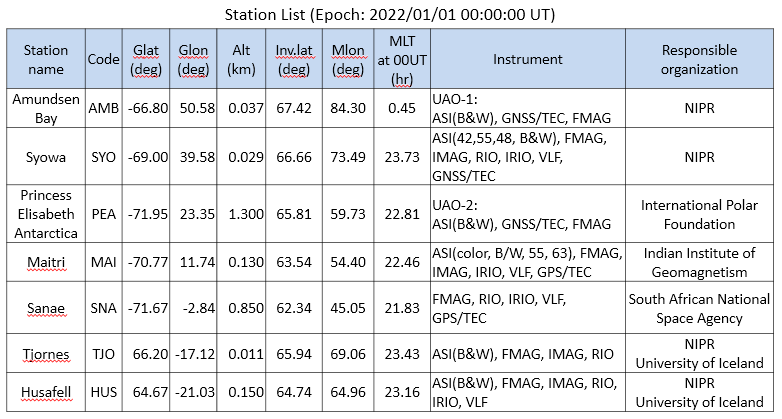
Instruments
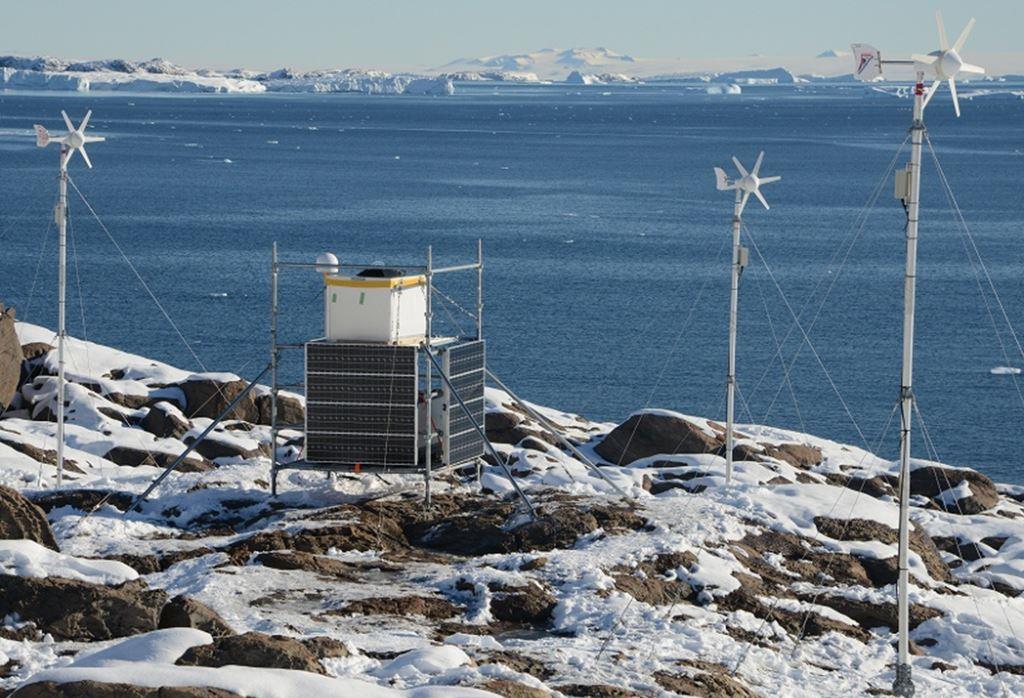
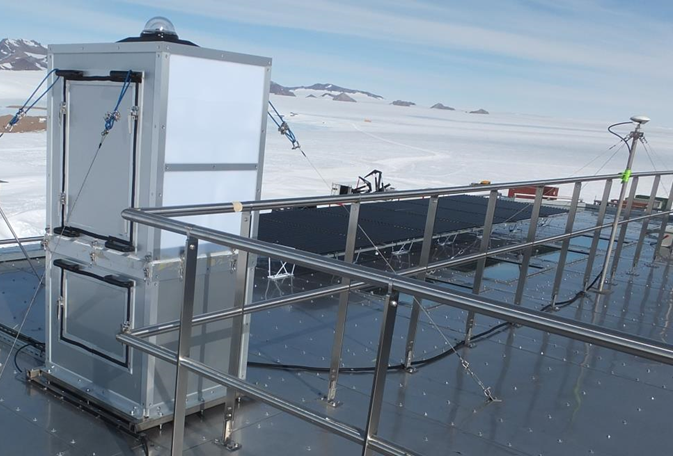
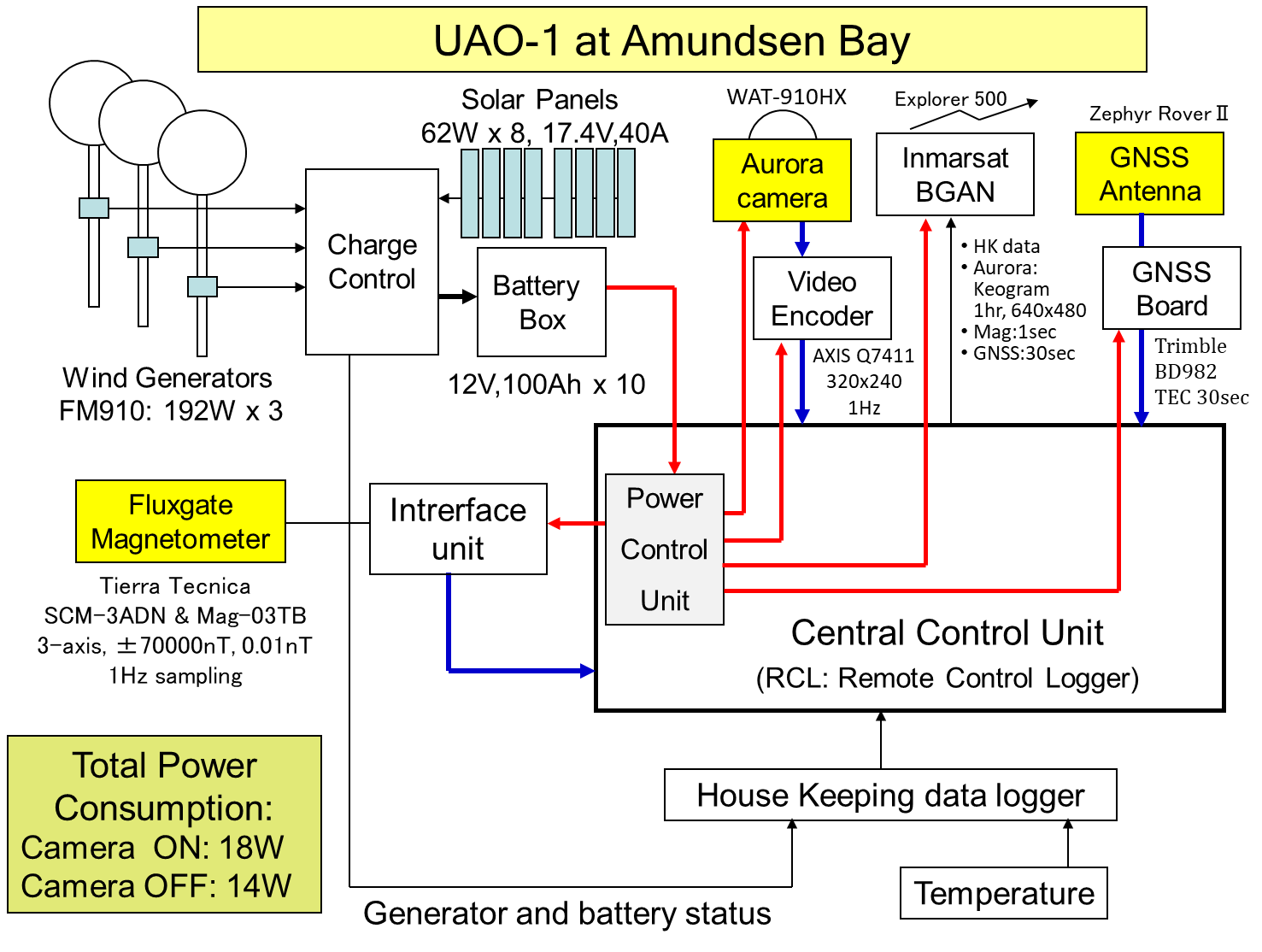
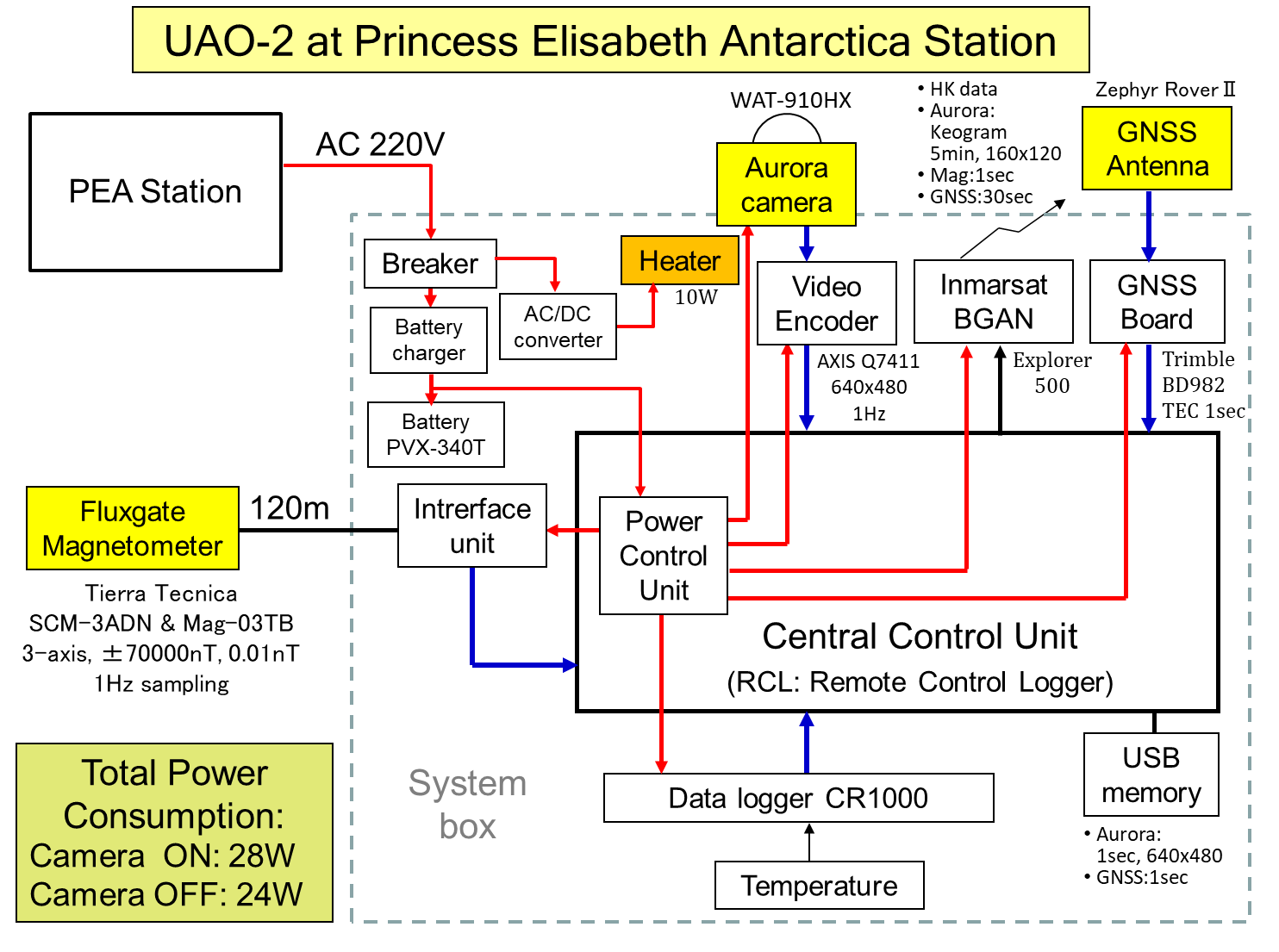
Each UAO is equipped with a 3-axis fluxgate magnetometer, Panchromatic (black&white) all-sky auroral imager, GNSS/TEC receiver, and a data communication system using the Inmarsat satellite data link with a low power consumption. Electric power of the UAO-1 is supplied by a hybrid natural energy electric generation system which consists of three sets of 192W wind generators and 8 sets of 62W solar panels, while that of the UAO-2 is supplied from the AC power source of the PEA Station which is generated by a power generation system of the station using nine big wind generators and solar panels. For the UAO, observed magnetometer data (1 sec resolution), GNSS BINEX data (30 sec resolution), daily Keogram and sample image data of the auroral imager, and House Keeping data (temperatures and power voltages) (1 min resolution) are transmitted at every 1 hour via the satellite link system to a server in Japan by FTP, and auroral image data of 1 sec resolution are stored in a memory card of the video encoder in the system. Sample interval and pixel resolution of the transmitted auroral image data are 1 hour (5 minutes) and 640x480 (160x120) for the UAO-1 (UAO-2), respectively. UAO-2 has the other USB memory in the system which can store auroral still image of 1 sec resolution with 640x480 pixel resolution and GNSS BINEX data of 1 sec resolution. PEA Station is maintained during summer season, and becomes an unmanned station during winter season, while the electric power to all the instruments at the station is supplied continuously all through the season. The auroral imager system (AIS) at Indian Maitri Station consists of four sets of all-sky imager using Watec cameras: 1) Panchromatic (color) ; 2) Panchromatic (black&white); 3) filtered at 560nm (FWHM:10nm); 4) filtered at 632nm (FWHM:10nm), respectively. Maitri is a year-round station. The auroral imager system is run autonomously. We ask expedition members at Maitri to send daily summary files via E-mail to us.
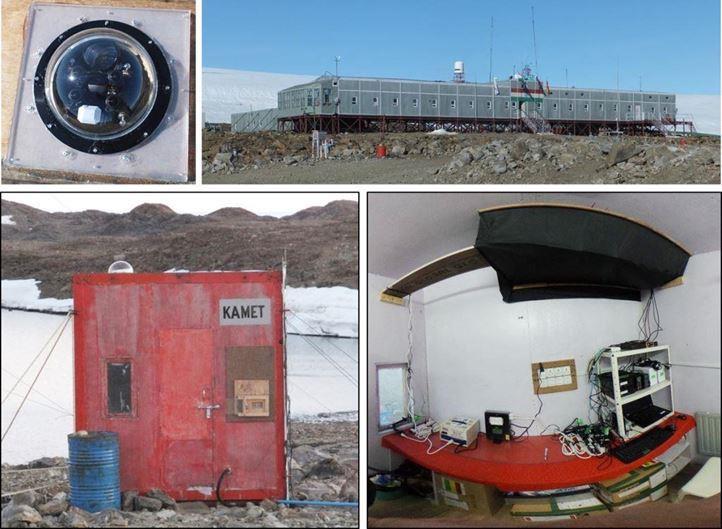
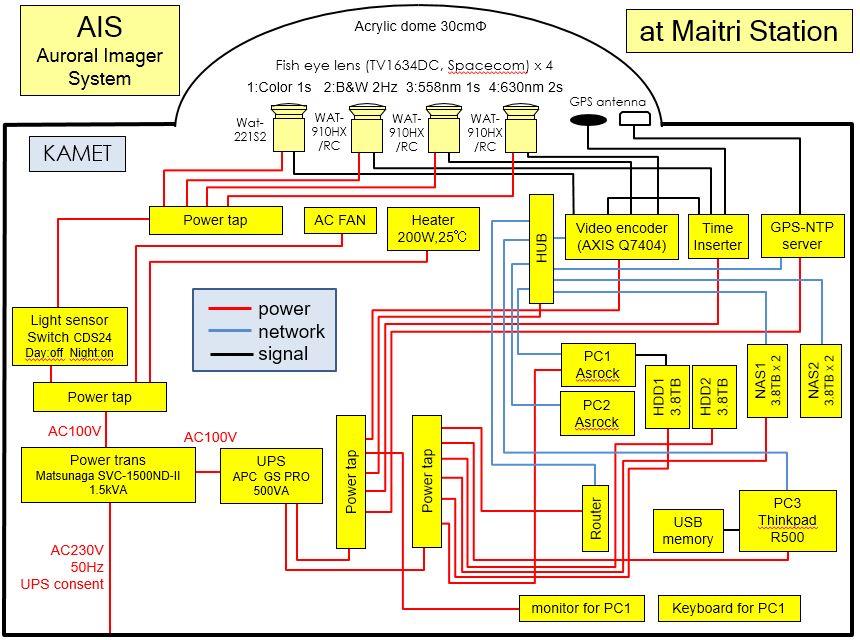
Project member
- Akira Kadokura (PI: ROIS-DS/PEDSC, NIPR)
- Yasunobu Ogawa (Co-I: NIPR)
- Yoshimasa Tanaka (Co-I: ROIS-DS/PEDSC, NIPR)
- Ryuho Kataoka (Co-I: NIPR)
- Masaki Okada (Co-I: NIPR)
- Hisao Yamagishi (Co-I: NIPR)
- Yuichi Otsuka (Co-I: Nagoya Univ./ISEE)
- Henri Robert (Overseas collaborator: IPF (International Polar Foundation), Belgium)
- Gopi K. Seemala (Overseas collaborator: IIG (Indian Institute of Geomagnetism), India)
- *NIPR: National Institute of Polar Research
- *PEDSC: Polar Environment Data Science Center
- *ISEE: Institute for Space-Earth Environmental Research
Link
- Maitri AIS Quick Look data viewer
- Auroral Quick-look Viewer of NIPR ground-based network(AQVN)
- Data Center for Aurora in NIPR
- Optical observations in Arctic and Antarctic stations
- Interhemispheric Conjugate Aurora Monitoring website
- All-Sky Aurora Camera at South Pole Station
- Aurora over South Pole Station and McMurdo Station
- IUGONET project
- IUGONET web service
- National Institute of Polar Research
- Polar Environment Data Science Center
- Princess Elisabeth Antarctica Station
- International Polar Foundation
- Indian Institute of Geomagnetism
References, Publications
1. Ogawa, Y., Y. Tanaka, A. Kadokura, K. Hosokawa, Y. Ebihara, T. Motoba, B. Gustavsson, U. Brandstrom, Y. Sato, S. Oyama, M. Ozaki, T. Raita, F. Sigernes, S. Nozawa, K. Shiokawa, M. Kosch, K. Kauristie, C. Hall, S. Suzuki, Y. Miyoshi, A. Gerrard, H. Miyaoka, and R. Fujii, Development of low-cost multi-wavelength imager system for studies of aurora and airglow, Polar Science, doi:10.1016/j.polar.2019.100501, 2020.